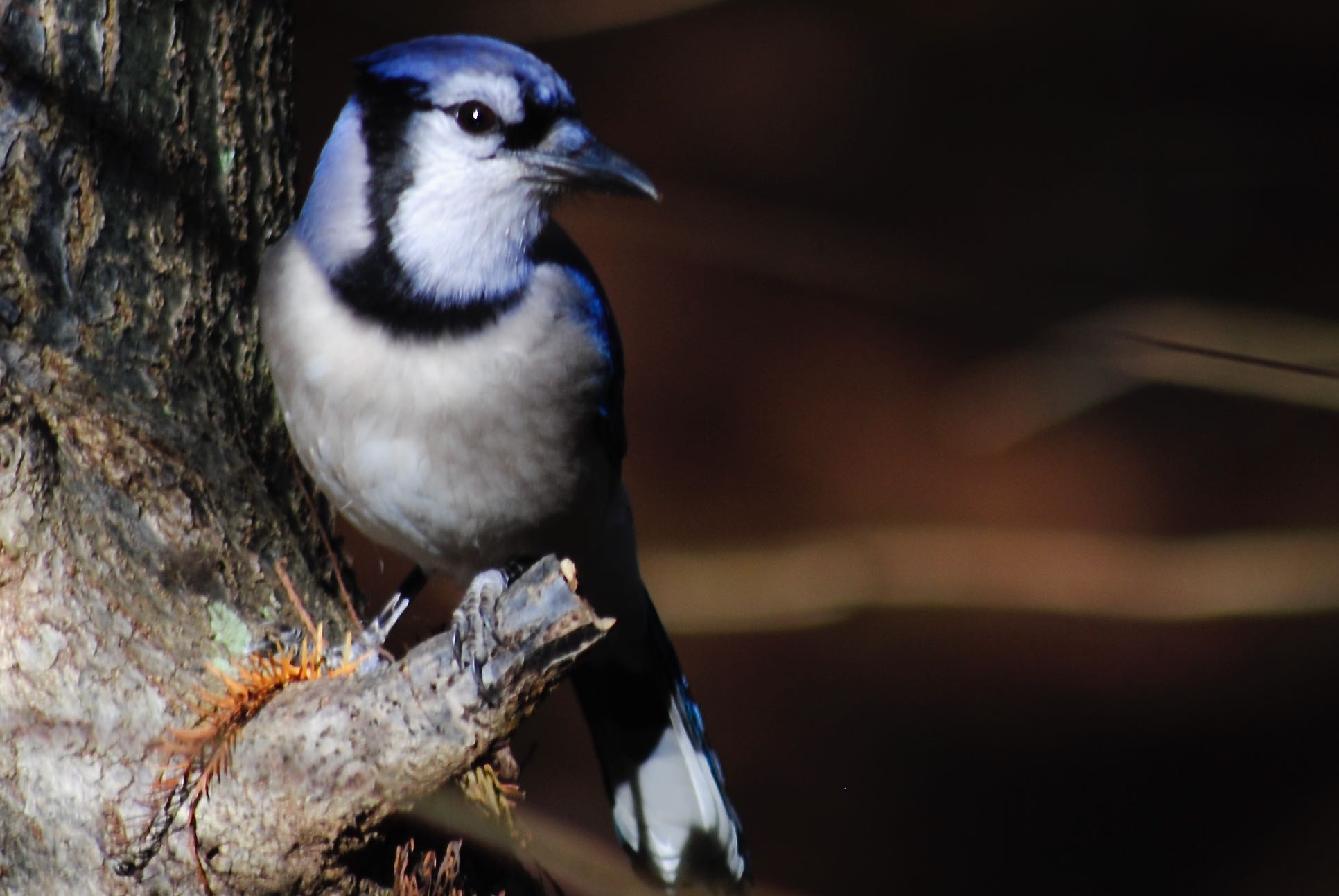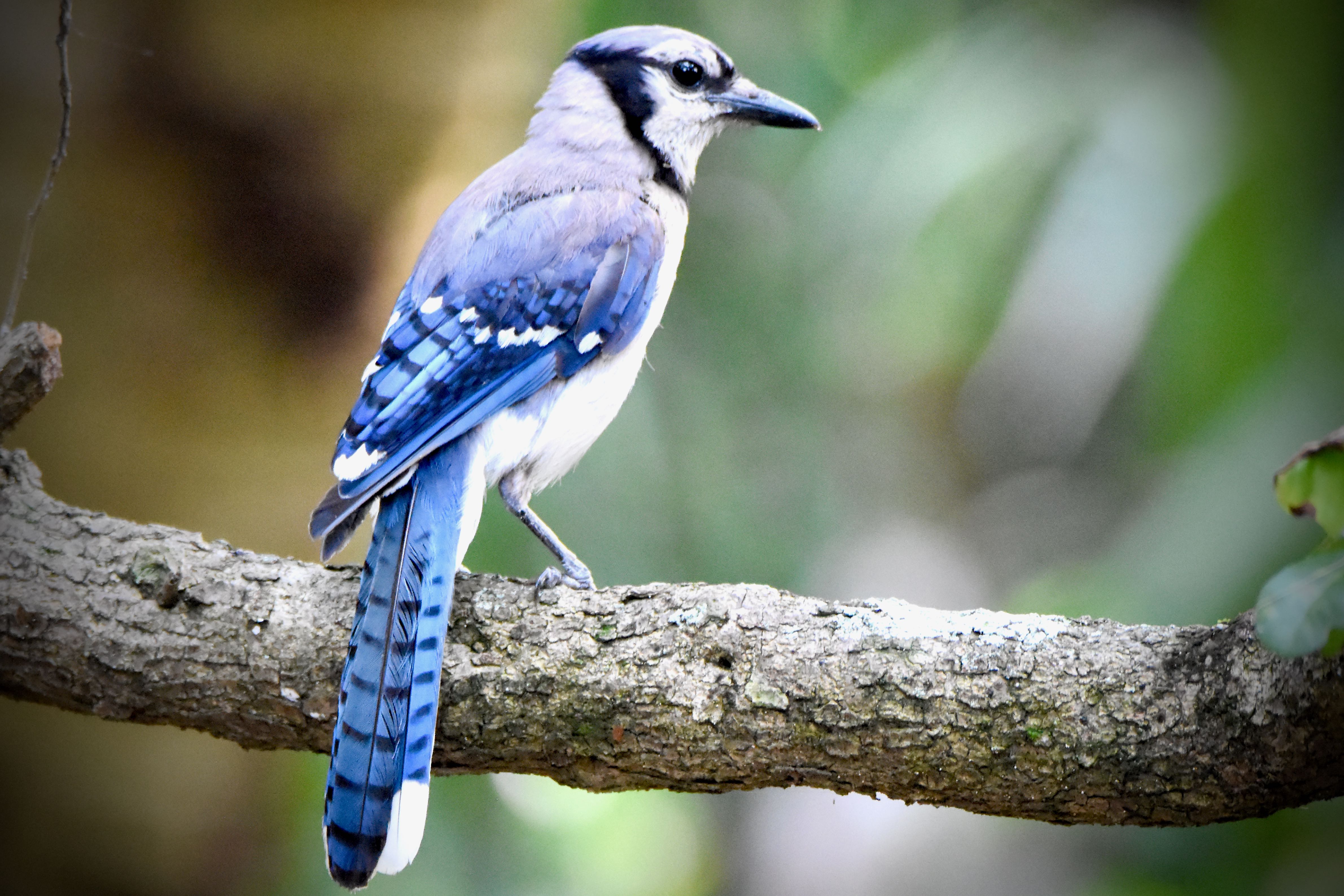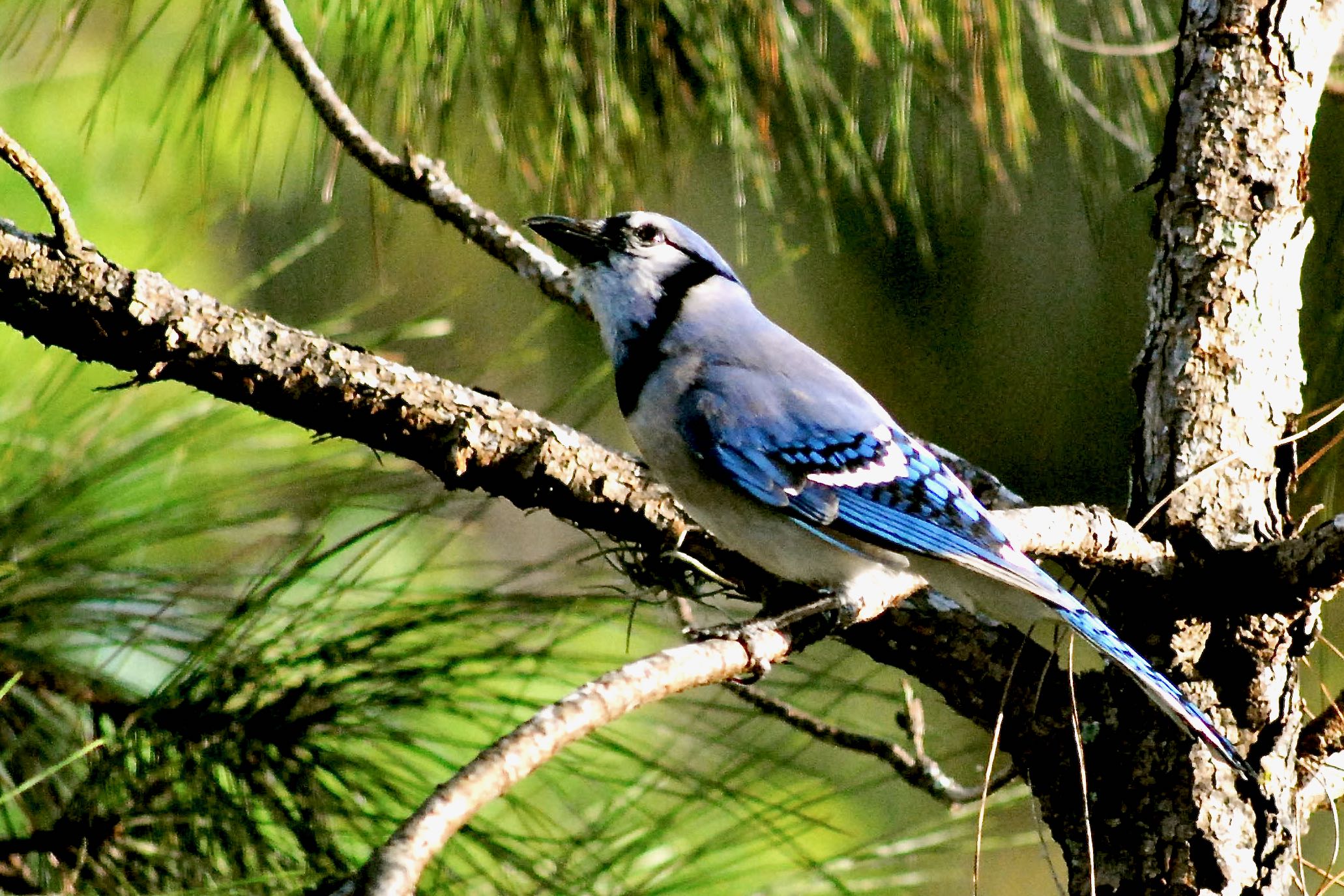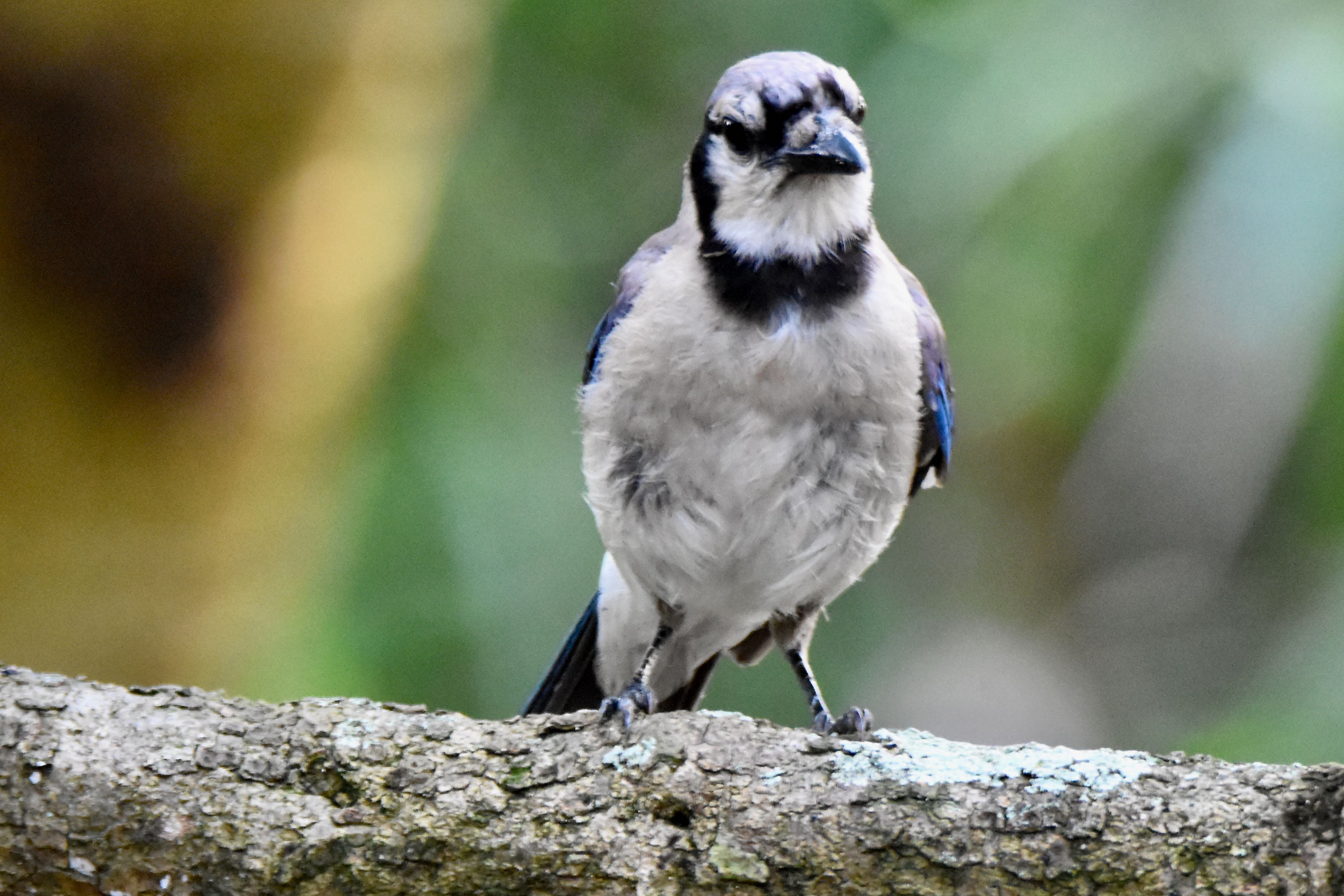
Blue Jay, photographed at Green Cay Nature Center, Boynton Beach, Palm Beach County, in July 2018.
Blue jays, Cyanocitta cristata, according to Cornell Labs, are a bit of mystery. And that's a bit of a mystery itself, since there are few birds more common, more easily recognizable throughout most of North America than the blue jay.
They are intelligent birds, noted for their complex social system and a love of acorns so abiding that they're credited with spreading oak trees throughout North America after the last ice age. They are beautiful birds, and fairly abundant here in South Florida.
Their range touches most of North America east of the Rocky Mountains, from southern Canada to South Florida. They are not migratory birds but they do migrate. We'll call this mystery No. 1.
Most blue jays stay put year round, whether they live in Minnesota or Florida. However, as much as 20 percent of the population does fly south for the winter each year. Those same birds might stay north the following winter, while others make the big trip. Why, no one really knows. Scientists can't figure out the patterns.
Blue jays also have a habit of mimicking the calls of hawks, particularly red-shouldered hawks. Why they do it, whether it is a warning to others that a predator is about, or as a means to intimidate their neighbors, isn't known. Call that mystery No. 2.
Oh and like all blue birds, blue jays aren't really blue, but that isn't a mystery. The feathers refract light in such a way as to make the bird appear blue. Weird but true.
They are large as song birds go, reaching a foot in length and with a wingspan that approaches 17 inches. They are loud birds when perched, but silent in flight. They like the edges of forests, particularly forests with oak trees, of course, but can be spotted in parks and the 'burbs.
Blue jays eat the usual bird fair. Acorns, as noted, are a favorite, but they eat bugs, seeds and other kinds of nuts. Occasionally they will eat the eggs of other birds, and sometimes the young. They have pockets in their esophagus where they can store food until they have an opporunity to dine. This comes in handy particularly for the male during breeding season.
Blue jays build cup-shaped nests out of twigs, grass, bits of root and mud in the crotches of tree branches, usually high off the ground. Males and females, who often mate for life, take turns fetching materials for the nest. Males, however, do most of the scrounging, while females do most of the building.
The female will lay 4-6 brown-spotted green eggs, and do all of the incubating, while the male brings her food (remember those pockets in esophagus). The hatchlings will stay in the nest for about 3 weeks before venturing out a bit. The parents will continue to feed them, however, for a month or two beyond the time when they fledge.
According to the Florida Fish and Wildlife Conservation Commission, nesting season for the state's blue jay population begins in March and continues through September. Blue jay pairs will have two or three broods in a season, with one generation pitching in to help raise the next. As we said, blue jays have a complex social system. Up north, however, blue jays generally have one brood per season.
Blue jays are members of the Corvidae family, which includes other jays, magpies and crows. We think they're fairly distinct looking, but there are a few other birds that look similar, including the Florida scrub-jay and the western scrub-jay.
The Florida scrub-jay is rare, however, and is limited in where it lives and lacks the blue jay's crest. The western scrub-jay, on the other hand, is not likely to be found wandering in Florida. Northern mockingbirds are similar in size and shape, and extremely abundant in Florida — they are the state bird, after all — but they are entirely devoid of any blue, so not a problem to differentiate.
Green Cay Nature Center



